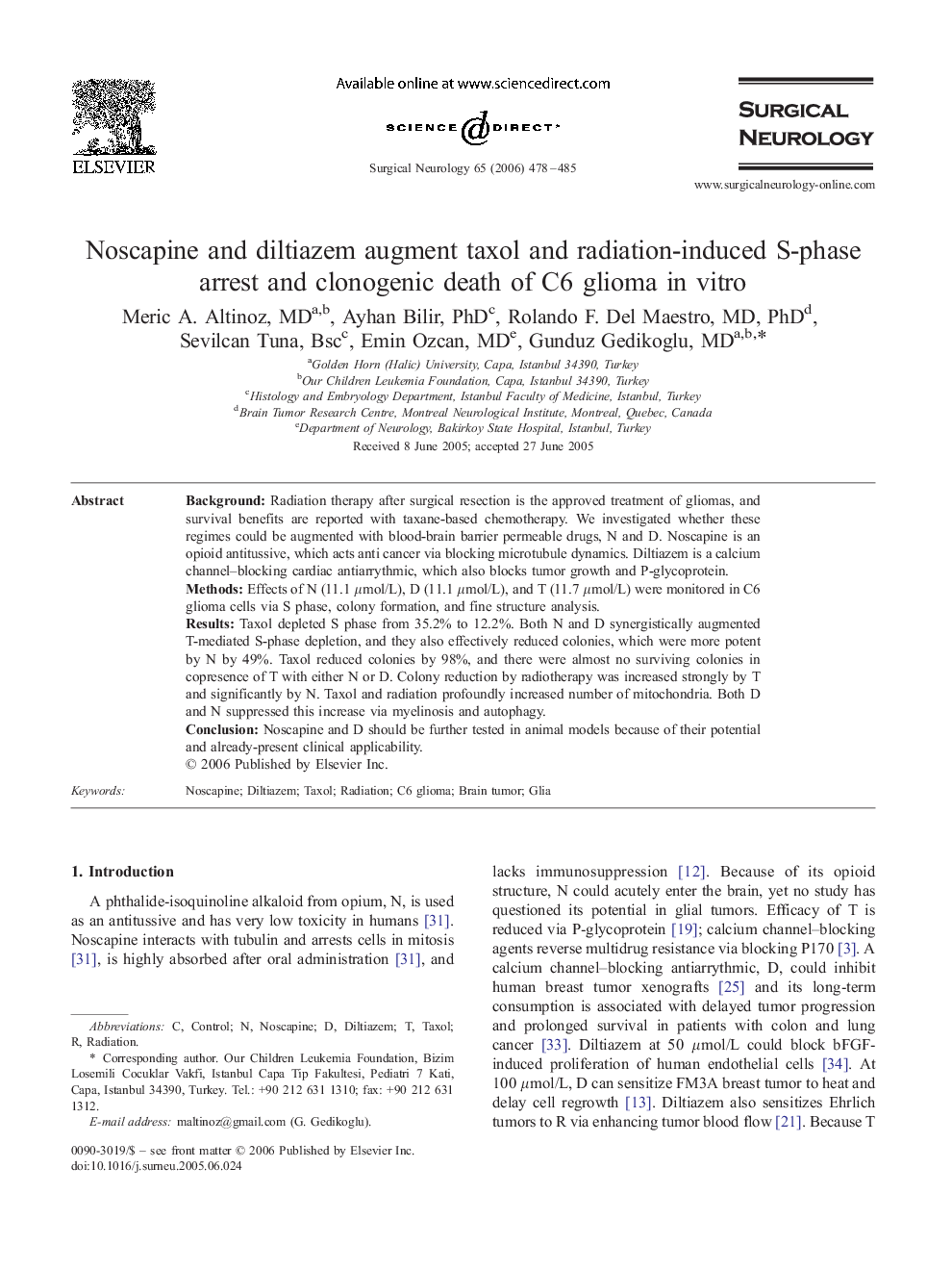| Article ID | Journal | Published Year | Pages | File Type |
|---|---|---|---|---|
| 3094184 | Surgical Neurology | 2006 | 7 Pages |
BackgroundRadiation therapy after surgical resection is the approved treatment of gliomas, and survival benefits are reported with taxane-based chemotherapy. We investigated whether these regimes could be augmented with blood-brain barrier permeable drugs, N and D. Noscapine is an opioid antitussive, which acts anti cancer via blocking microtubule dynamics. Diltiazem is a calcium channel–blocking cardiac antiarrythmic, which also blocks tumor growth and P-glycoprotein.MethodsEffects of N (11.1 μmol/L), D (11.1 μmol/L), and T (11.7 μmol/L) were monitored in C6 glioma cells via S phase, colony formation, and fine structure analysis.ResultsTaxol depleted S phase from 35.2% to 12.2%. Both N and D synergistically augmented T-mediated S-phase depletion, and they also effectively reduced colonies, which were more potent by N by 49%. Taxol reduced colonies by 98%, and there were almost no surviving colonies in copresence of T with either N or D. Colony reduction by radiotherapy was increased strongly by T and significantly by N. Taxol and radiation profoundly increased number of mitochondria. Both D and N suppressed this increase via myelinosis and autophagy.ConclusionNoscapine and D should be further tested in animal models because of their potential and already-present clinical applicability.
